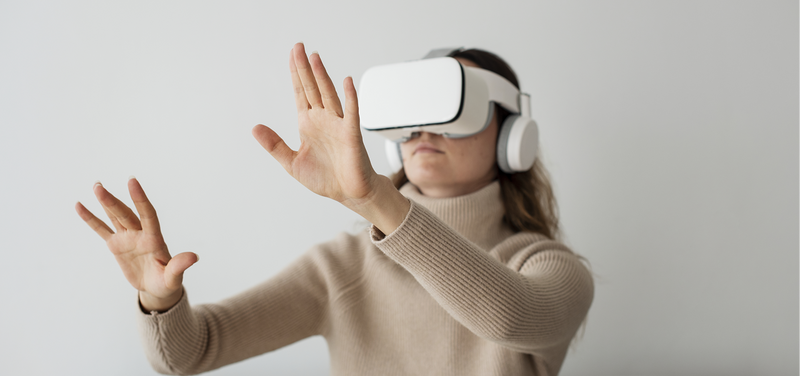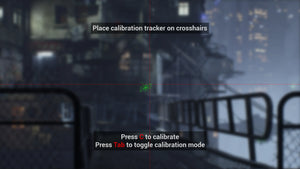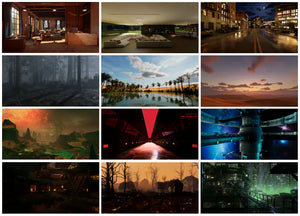Top 10 Augmented Reality Applications Transforming Industries

Augmented Reality (AR) has moved beyond being a futuristic concept to becoming a powerful tool across various sectors. From enhancing manufacturing processes to creating immersive experiences in education and tourism, augmented reality applications are shaping how businesses operate and how users interact with products and services.
In this guide, we’ll explore the top 10 AR applications with real-world examples, covering industries like manufacturing, healthcare, retail, hospitality, and more.
1. Augmented Reality Applications in Manufacturing
The manufacturing industry has embraced AR to streamline workflows, reduce errors, and improve productivity. AR-powered instructions allow workers to visualize assembly steps in real-time, reducing dependency on paper manuals.
Benefits:
-
Improved efficiency in assembly lines.
-
Enhanced safety protocols with AR-guided training.
-
Reduced downtime for maintenance using AR overlays.
Examples:
-
Boeing uses AR for wiring in aircraft production.
-
Porsche integrates AR to assist technicians in repairs.
Industrial augmented reality applications like these are paving the way for smart factories, making AR a core part of Industry 4.0.

2. Augmented Reality Applications in Tourism
Tourism is leveraging AR to enrich travelers’ experiences by blending digital information with real-world environments.
Applications:
-
Virtual guides in museums and historical sites.
-
AR-based city tours offering interactive storytelling.
-
Hotels using AR brochures for room previews.
Examples:
-
The Louvre Museum’s AR app for enhanced art exploration.
-
AR navigation tools in popular destinations.
Businesses in tourism and hospitality can use augmented reality applications for hospitality to create memorable experiences for guests.
3. Augmented Reality Applications in Education
Education is witnessing a transformation with AR-based learning tools. Students can now interact with 3D models of complex subjects, making learning more engaging and effective.
Examples:
-
AR anatomy apps for medical students.
-
Virtual labs for science experiments.
-
AR storytelling in early education.
Educational institutions are turning to augmented reality applications development to create immersive curriculums that improve retention rates.
4. Augmented Reality Applications in Pediatric Dentistry
Healthcare, particularly pediatric dentistry, is exploring AR to reduce anxiety and improve treatment outcomes.
How It Helps:
-
AR games distract children during procedures.
-
Virtual simulations help dentists explain treatments to parents.
Such examples of augmented reality applications show how technology can improve patient experiences in healthcare settings.
5. Augmented Reality Applications in the Automotive Industry
The automotive sector uses AR for design, manufacturing, and customer experiences.
Applications:
-
AR-assisted vehicle assembly.
-
Virtual showrooms for customers.
-
AR manuals for car owners.
Examples:
-
BMW’s AR app for virtual car customization.
-
AR in technician training for advanced diagnostics.
Automakers leverage industrial augmented reality applications to ensure precision in manufacturing while improving customer engagement.

6. Augmented Reality Applications in Retail
Retail brands use AR to bridge the gap between online and offline shopping.
Features:
-
Virtual try-on for fashion and eyewear.
-
AR-powered product demos in stores.
-
Interactive packaging with AR experiences.
Examples:
-
IKEA Place app for home furniture visualization.
-
Sephora Virtual Artist for makeup trials.
AR helps retailers create personalized shopping experiences, driving conversions and customer satisfaction.
7. Virtual and Augmented Reality Applications in Hospitality
Hotels and resorts are using virtual and augmented reality applications to offer immersive previews of their facilities and services. Guests can experience hotel rooms, restaurants, and event spaces before booking.
Benefits:
-
Increased booking confidence.
-
Enhanced customer experience through interactive AR menus and guides.
-
Virtual concierge services via AR apps.
Examples:
-
Marriott using VR tours for event spaces.
-
AR-enabled restaurant menus for visualizing dishes.
These augmented reality applications for hospitality enhance engagement and build trust among potential guests.
8. Augmented Reality Applications in Real Estate
Real estate firms are using AR to provide 3D walkthroughs of properties, even before they are constructed.
Applications:
-
AR staging for interior design.
-
Virtual property tours via AR-enabled apps.
-
Interactive brochures with AR overlays.
This creates transparency and helps buyers make faster decisions.
9. Augmented Reality Applications in Gaming
Gaming remains one of the most popular sectors for AR innovation.
Examples:
-
Pokémon Go as a pioneer in mobile AR gaming.
-
AR-based escape rooms and theme parks.
Beyond gaming, entertainment brands use AR filters and immersive ads to engage audiences.
10. Augmented Reality Applications in Healthcare & Surgery
AR assists doctors with real-time data visualization during surgeries and complex procedures.
Benefits:
-
Minimally invasive surgeries with AR guidance.
-
AR medical training for students.
Healthcare companies and augmented reality applications developers continue innovating solutions that save lives and improve treatment quality.
Industrial Augmented Reality Applications
Beyond manufacturing, AR is integrated into industrial operations like construction, energy, and logistics.
Use Cases:
-
AR helmets for real-time schematics on construction sites.
-
AR overlays for equipment maintenance in oil and gas.
-
AR-assisted inventory management in warehouses.
These industrial augmented reality applications help reduce human errors, improve safety, and accelerate complex operations.
Mobile Augmented Reality Applications
Mobile devices have accelerated AR adoption. Mobile augmented reality applications offer convenience and scalability, as most users already have AR-capable smartphones.
Popular Use Cases:
-
Gaming (e.g., Pokémon Go).
-
Retail virtual try-ons.
-
Interior design visualization.
These apps combine portability and interactivity, making AR accessible to a global audience.

Web-Based Augmented Reality Applications
Not all AR experiences require an app. Web-based augmented reality applications allow users to access AR through a simple browser, making it highly accessible.
Key Features:
-
No app download required.
-
Easy integration for marketing campaigns.
-
Cross-platform compatibility.
Examples:
-
Retailers offering virtual try-on experiences directly via mobile browsers.
-
SaaS companies showcasing their product dashboards in AR through web-based demos.
This approach is especially useful for businesses seeking fast, frictionless user engagement.
Augmented Reality for SaaS Marketing
One emerging trend is using AR to showcase SaaS platforms. Businesses often ask:
What augmented reality applications exist for showcasing SaaS in marketing?
Here’s how it works:
-
SaaS companies use AR demos to project dashboards or analytics interfaces into a physical environment.
-
Customers can interact with the UI in 3D, making complex solutions easier to understand.
Example:
-
AR apps for software previews at trade shows.
-
AR-based tutorials for enterprise software.
This innovative approach gives SaaS companies a competitive edge in explaining product functionality visually.
Augmented Reality for Remote Assistance
AR-based remote assistance allows experts to guide technicians using live AR annotations over video feeds.
Key Advantages:
-
Reduces travel costs.
-
Speeds up troubleshooting.
-
Improves first-time fix rates.
Industries like telecom, automotive, and healthcare leverage this solution to optimize field operations.
Examples of Augmented Reality Applications Across Industries
Here’s a quick summary of the top sectors using AR today:
-
Manufacturing – AR-guided assembly and maintenance.
-
Education – Interactive 3D models for learning.
-
Retail – Virtual try-on and AR product previews.
-
Healthcare – Surgery visualization and patient engagement.
-
Automotive – Virtual showrooms and AR diagnostics.
-
Tourism & Hospitality – AR tours and interactive guides.
If you’re planning AR integration for your business, partner with an augmented reality applications company that offers tailored solutions for your industry.
FAQs about Augmented Reality Applications
Q1. What industries benefit the most from AR applications?
Manufacturing, education, retail, healthcare, and tourism lead the way in AR adoption, but nearly every sector can leverage it.
Q2. What augmented reality applications exist for SaaS marketing?
SaaS companies use AR to create interactive product demos, AR tutorials, and immersive trade show experiences.
Q3. Do I need an app for AR?
Not always. Web-based augmented reality applications let users access AR experiences through browsers without app installation.
Q4. How much does AR application development cost?
The cost depends on complexity, platform, and features. Basic AR apps start at $10,000, while enterprise solutions can go higher.
Ready to Build Your AR Solution?
Take your business to the next level with immersive AR technology. Contact us at ARwall today.




